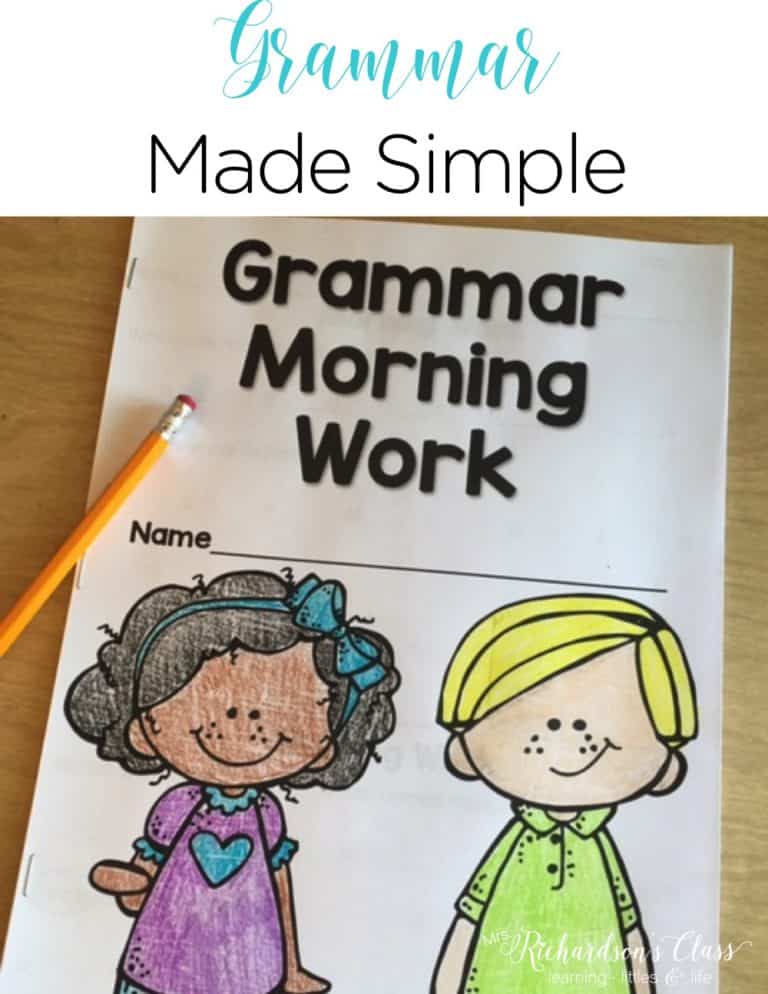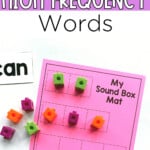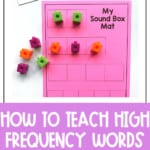

Elevate your teaching practices on how to teach high-frequency words with the science of reading in mind.
During my first few years of teaching, I remember preparing flashcards each Monday with that week’s high-frequency words on them. We introduced them on Mondays and practiced them the rest of the week. We would spell the words fast and slow, clap the number of syllables, and say them repeatedly. On Friday, those five words went on our word wall because we knew them. Or I assumed my students knew them because we had practiced them all week. Does this sound familiar, friend?
At the time I thought I was giving my students good practice with those words. But really I was just asking them to commit those words to memory. I thought since we had practiced the words for a week, they were in their long-term memory and they knew them as sight words. Looking back, I didn’t do the best job of spiraling and reviewing those words, except when we would play some sight words games.
To help you prevent making the same mistakes I did, let’s dive into the best practices on how to teach high-frequency words so our students experience success in reading.
Current research shows us that high-frequency words are not just some “other” category of words that have to be memorized by students. They are words just like all the other words we teach and have some degree of decodability. We need to show our students how to decode these words.
We also need to explicitly teach the parts of some high-frequency words that are irregular to our students. It is so important to explicitly teach our students high-frequency words. Then we need to connect the learning they are doing in phonics to all words.
YES! Research shows us that these are not just words that have to memorize. These words all have at least some degree of decodability to them. If you look at the words “did” and “can”, those words can be fully decoded with knowledge of short vowels and consonant sounds.
The beginning and ending sounds in the words “said” and “could” can be decoded using knowledge of consonant sounds. The middle part of those words is the tricky part. Those tricky parts are the parts we want to explicitly teach and show our students through orthographic mapping.
This explicit teaching can be done easily in small groups because you are working with a small number of students. Your small group time generally lends itself to you being able to see any difficulties students are having and remediate them. High-frequency words can also be taught during whole group instruction. We just want to make sure we are explicitly teaching these words to our students.
We know teaching students to memorize these words is not the best way for them to learn them. So how do we teach these words? One way to effectively teach students high-frequency words is by orthographically mapping these words.
What is orthographic mapping? Words have 3 parts to them- the sounds (phonemes) heard in the word, the letters (graphemes) used to spell the word, and the meaning of the word. Orthographic mapping teaches students to listen to the sounds heard in the word and map the phonemes to the graphemes. Then they can think about the spelling of that word.
Some great tools to use when teaching students to orthographically map words are elkonin boxes or a play-doh smash mat. You can grab both of those in my FREE Literacy Manipulatives set.
If orthographic mapping feels confusing or unfamiliar, I have a quick example of a word orthographically mapped:
Say the word “for” and have students repeat the word. Count how many sounds or phonemes are in the word together. There are two phonemes in the word “for”. Have students use their elkonin box mat or their playdoh smash mat to show the number of phonemes in the word. Then show students the letters used in the word “for” by writing them underneath.
You can also check out this YouTube video I made about orthographic mapping!

This is such a great way to get students to visually see the phonemes they hear in a word and how we spell those sounds.
We are all learning together, friends! I look back at my high-frequency word instruction and know that it could be so much better because now I know better. There’s grace for the past but knowledge going forward. Have you tried orthographically mapping high-frequency words with your students? I’d love to hear your thoughts in the comments! Happy Teaching!

Want to use the latest research to boost your readers during small groups? This FREE guide is packed with engaging ideas to help them grow!

I’m a K-1 teacher who is passionate about making lessons your students love and that are easy to implement for teachers. Helping teachers like you navigate their way through their literacy block brings me great joy. I am a lifelong learner who loves staying on top of current literacy learning and practices. Here, you’ll find the tools you need to move your K-2 students forward!


| Cookie | Duration | Description |
|---|---|---|
| cookielawinfo-checkbox-analytics | 11 months | This cookie is set by GDPR Cookie Consent plugin. The cookie is used to store the user consent for the cookies in the category "Analytics". |
| cookielawinfo-checkbox-functional | 11 months | The cookie is set by GDPR cookie consent to record the user consent for the cookies in the category "Functional". |
| cookielawinfo-checkbox-necessary | 11 months | This cookie is set by GDPR Cookie Consent plugin. The cookies is used to store the user consent for the cookies in the category "Necessary". |
| cookielawinfo-checkbox-others | 11 months | This cookie is set by GDPR Cookie Consent plugin. The cookie is used to store the user consent for the cookies in the category "Other. |
| cookielawinfo-checkbox-performance | 11 months | This cookie is set by GDPR Cookie Consent plugin. The cookie is used to store the user consent for the cookies in the category "Performance". |
| viewed_cookie_policy | 11 months | The cookie is set by the GDPR Cookie Consent plugin and is used to store whether or not user has consented to the use of cookies. It does not store any personal data. |



One Response
I am a reading resource teacher and I really enjoyed your video. I will be using this method when teaching site words. Thank you and please keep the videos and emails coming. Have a great school year!